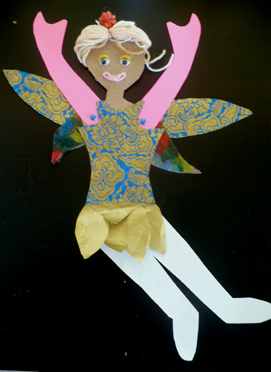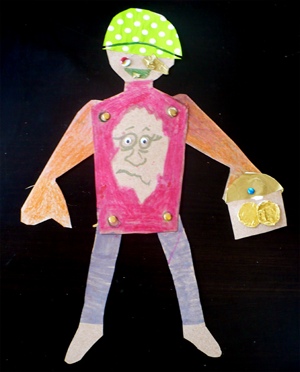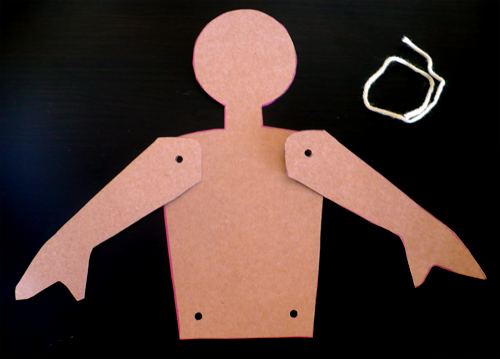Durable Paper Dolls: Materials Science Meets Creative Pastime
Joints give paper dolls added life and let little fingers manipulate characters as they play out their roles in an imaginative storyline. But joints also add potential hot spots for damage. A plastic toy figurine may lose its arm, head, or hair, but the life of a paper doll may be even more short-lived! A new hands-on science activity helps kids experiment with paper dolls by putting the durability of certain design and materials choices to the test. Once the best approach is scientifically determined, kids can make and decorate a paper doll with greater understanding of how the materials affect how well the doll will last.


Choose Your Own Character
Paper dolls are a low-tech, inexpensive, and open-ended activity at home. With a bit of paper, some coloring tools, and imagination, kids can turn any character into a paper doll. You can find examples, templates, and inspiration online for all kinds of exciting paper dolls, from ninjas, robots, and fairies to dragons, pirates, and mermaids. The possibilities are endless, but not all paper dolls are constructed the same and, as the saying goes, not all paper dolls are made equal.
Choose Your Materials and Design
Some paper dolls are made from single pieces of paper. These dolls sometimes are designed to fit into a stand, and kids make costumes and wardrobes that can be attached using tabs, tape, buttons, or bits of Velcro. Other paper dolls kick construction up a notch and are articulated or jointed. These dolls may only have one set of clothing, but they contain moving parts like arms and legs. The number of moving parts may vary. You can certainly find paper doll creations with numerous jointed parts, but you can also make a basic articulated paper doll that only has movable arms and legs.
Articulated paper dolls offer more flexibility for positioning the doll during storytelling or play, but having multiple moving parts also makes the dolls subject to different kinds of wear and tear.

Testing Paper Doll Construction
In a new materials science project at Science Buddies, students (and families) can turn paper doll-making into a hands-on science project. There are a number of ways that the joints of an articulated paper doll may be assembled. Do the various approaches to constructing a paper doll affect how well the doll will last? How much wear and tear can the joints take? In addition to articulation, there are a number of other design options that may make a difference in how well a doll lasts or how durable it is.
The Get Crafty—Create Your Own Durable Paper Doll project focuses on the issue of articulated joints and explores two design options, the weight of the paper you use for the doll and what you use to attach the arms. The project guides students in doing a quantitative test of the various combinations to see which is strongest (or which can support the most weight before an arm is ripped off the doll). This quantitative approach helps students see the value in doing an assessment that can be measured rather than just doing a subjective assessment. After doing a scientific experiment with dolls made from two kinds of paper and with joints attached using two different methods, students will be able to see from their data which approach was most durable.
Making Connections
A hands-on project like this can be used to talk with kids about design, engineering, materials science, and the value of scientific product design and construction testing. Even when it comes to toys, science can be used to explore what works and what doesn't work and to come up with solutions and improvements that will lead to longer-lasting toys—and happier kids!
Categories:
You Might Also Enjoy These Related Posts:
- 15 STEM Gifts & Science Kits You'll Feel Good About Giving
- 13 Boat Science and Submarine Science Projects and Experiments
- July 4th STEM! Summer Science Picks for Independence Day!
- 12 Science Kits for Summer Science Experiments and Discovery
- 15 Science Projects to Make and Give for Father's Day
- Ready, Set, Go! (Awesome Summer Science Experiments)
- Awesome Summer Science Experiments
- 10 STEM Activities with Cardboard Tubes









